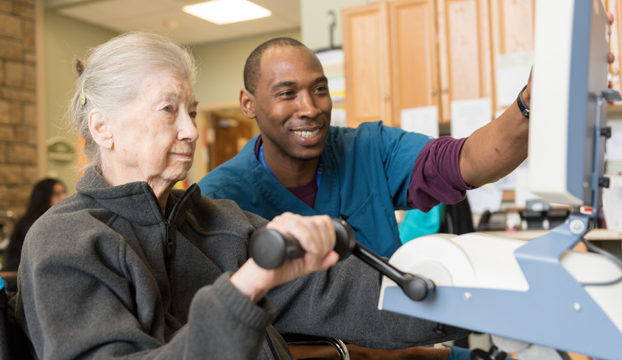Efficient Methods for Reducing Dyspnea in Physiotherapeutic Therapy Appointments
Efficient Methods for Reducing Dyspnea in Physiotherapeutic Therapy Appointments
Blog Article
Dyspnea, or difficulty breathing, is a common issue that many people face, especially those with chronic lung conditions, heart issues, or other health concerns. In physical therapy sessions, addressing dyspnea is crucial for helping patients improve their overall quality of life. By employing specific techniques and strategies, physical therapists can assist patients in controlling their respiratory difficulties. Understanding these effective methods can empower both therapists and patients to work together more efficiently in overcoming challenges related to breathing difficulties.
One of the main techniques used to reduce dyspnea in physical therapy is the application of regulated breathing activities. These activities often focus on abdominal breathing, which promotes patients to use their diaphragm rather than their upper thoracic muscles when breathing in. This method helps to increase lung volume and efficiency. Additionally, pursed-lip breathing is another approach that can be beneficial. This technique involves inhaling through the nose and exhaling slowly through compressed lips, which can assist to keep airways clear longer and make breathing feel easier. By incorporating these activities into therapy sessions, physical therapists can provide patients with tools to control their dyspnea both during and beyond of their appointments.
Another important aspect of managing breathing difficulties in physical therapy is the development of an personalized exercise regimen. Tailoring exercises to satisfy the individual needs and capabilities of each patient is essential. Therapists should gradually integrate aerobic activities, such as walking or biking, in a structured manner, allowing patients to develop their endurance over a period. This incremental method helps advice patients to feel more at ease with physical activity while simultaneously improving their lung function and overall stamina. It is vital for therapists to observe patients carefully during these exercises to ensure they are not overworking themselves, which could result to greater difficulty of breath.
Education also plays a major role in reducing breathing difficulties during physical therapy sessions. Providing patients with information about their condition and the factors behind dyspnea can empower them to take charge of their health. Therapists can describe how factors like anxiety, posture, and surrounding conditions can affect breathing. By comprehending these ideas, patients can learn to control their symptoms more efficiently. Techniques such as anxiety reduction methods and proper body mechanics can additionally assist in reducing the impact of breathing difficulties during routine activities and therapy appointments.
In conclusion, successfully reducing dyspnea in physical therapy sessions involves a combination of breathing exercises, personalized exercise programs, and patient education. By implementing these efficient methods, physical therapists can help patients control their respiratory difficulties and improve their overall well-being. Collaboration between therapists and patients is crucial to create customized interventions that address specific needs. With the right support and methods, patients can experience comfort from breathing difficulties and engage more fully in their physical therapy process, ultimately leading to a better standard of life.